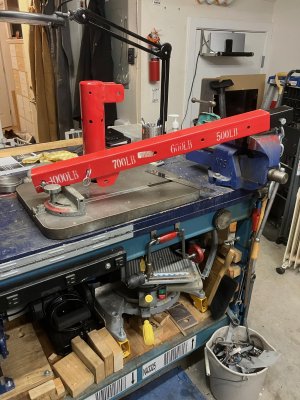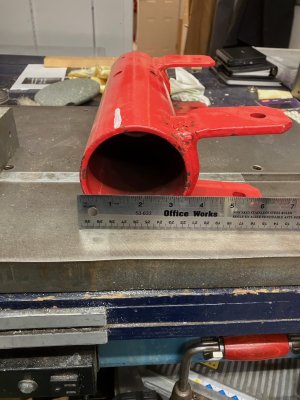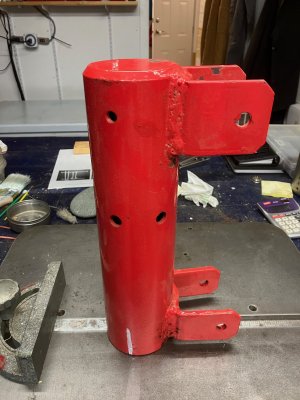My PA 1000lb mini truck crane easily moves my 500lb lathe. Bolted to my work bench. Two pieces of angle iron beneath the bench bolt to the crane mounting plate on the bench top, six 1/2" bolts connect the top and bottom.
The horizontal beam is 2x2x3/16 steel HSS, the vertical rotating cap is 3" Sch40 pipe.
what size is your vertical post?

The horizontal beam is 2x2x3/16 steel HSS, the vertical rotating cap is 3" Sch40 pipe.
what size is your vertical post?





